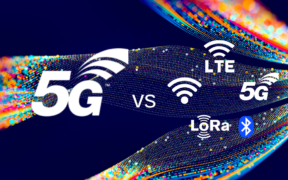Category: Enterprises

In the era of digital transformation, the concept of digital twins has emerged as a groundbreaking technology that promises to reshape industries and enhance connectivity. iBwave’s new eBook “Unlocking the Power of Digital Twins” explores this technology, shedding light on its potential and applications. Understanding Digital Twins Digital twins are virtual replicas of physical objects, […]

In the ever-evolving landscape of connectivity solutions, enterprises face a pivotal decision – whether to embrace the promise of 5G or deploy a blend of multiple network technologies. While the allure of a 5G-centric future is undeniable, practical considerations and real-world complexities necessitate a more nuanced approach. This article delves into the key factors that […]

Though private 4G/LTE and 5G deployments are happening around the world, there are substantial differences in band availability by region. This aligns with differences in how different geographies make use of private networks. For example, Chile and Australia rely on private networks to support mining operations in remote areas. Other countries see more deployment in […]
